UH’s Tilman J. Fertitta Family College of Medicine opens state-of-the-art facility
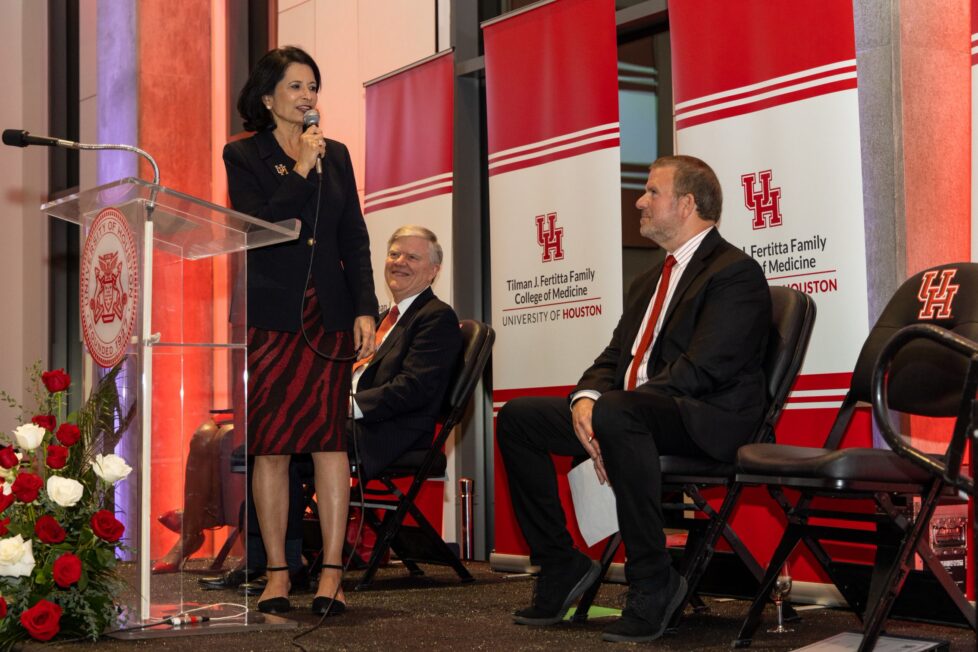
When University of Houston President Renu Khator unveiled plans for a new medical school in 2014, she envisioned a program that would produce a diverse group of graduates with a deep understanding of the social determinants of health and a commitment to providing compassionate, high-value care to underserved populations.
A big part of those plans was a new, state-of-the-art facility to support these future health care leaders. Now, that dream is finally a reality. Khator was joined on Oct. 26 by hundreds of faculty, staff, medical students, donors, administrators and other dignitaries to cut the ribbon on the new $90 million state-of-the art building for the Tilman J. Fertitta Family College of Medicine.

“What a great day it is to be a Cougar,” Khator exclaimed, before emphasizing the importance of building a medical school specific to the needs of the city of Houston focused on health equity, primary care and serving communities that are under-resourced and underserved.
“I’m so grateful to be able to stand here and to say the University of Houston College of Medicine is truly special,” said Khator. “We can say proudly that we are producing Cougar doctors here who are going to do things that others have not been able to do.”
[SCROLL BREAK!!! Bayou Beat News can also be found in PRINT at a store near you. Click the link below to check out our E-Edition!]
The UH College of Medicine welcomed its first class in 2020, becoming the first new medical school to open in the city of Houston in nearly 50 years. This past May, the university received a transformational $50 million gift from Tilman Fertitta, chairman of the UH System Board of Regents, and his family to help the college address the state’s shortage of primary care physicians, hire professionals focused on health care innovation, and support research that improves health care and health care outcomes. In recognition of the gift, the college was named in his family’s honor.
“It’s taken a lot of people, and the stars aligned, but it happened. What we’ve created here is really special. We’re going to have 480 students every four years that are primary care physicians, which we really need in this country,” said Fertitta. “When you put your head on the pillow at night, this is the one thing you can say we really got something done to help so many people out there. And there’s one thing I do believe we should have in the United States of America: Everybody should have equal health care.”
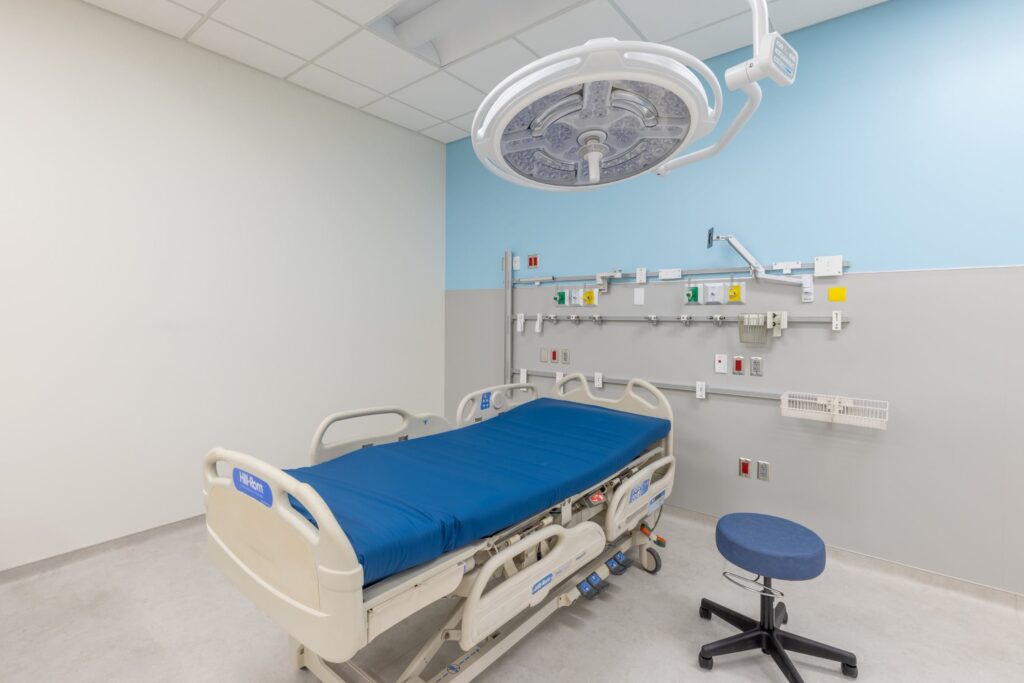
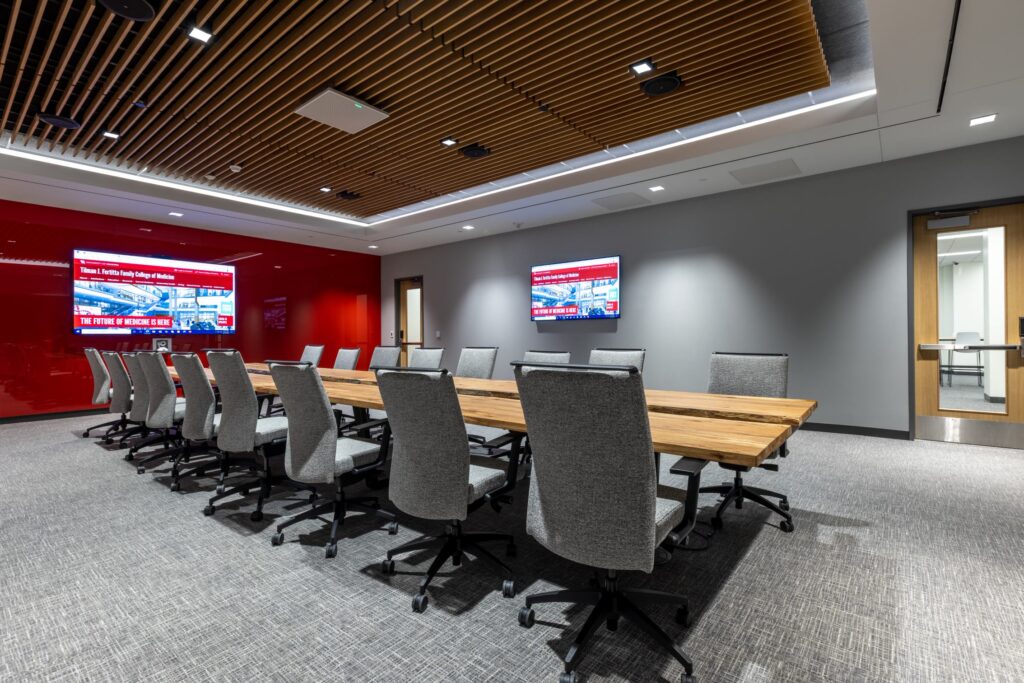
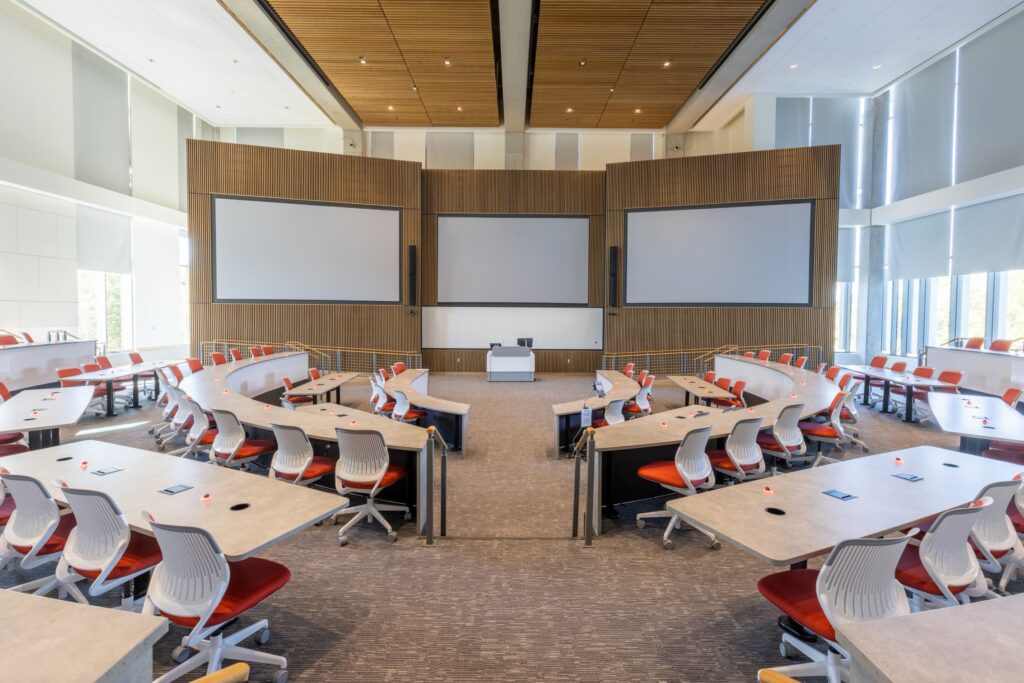


The public unveiling of the new building comes just months after the Fertitta Family College of Medicine welcomed its third class of students and largest ever. The diverse class of 60 students is twice as large as the previous two classes. At full enrollment, the college will have 480 students who will call this new facility their academic home.
“The ribbon cutting signifies that we’re one step closer to meeting the health care needs of our region and state,” said Dr. Stephen Spann, founding dean of the Fertitta Family College of Medicine. “I sincerely believe that what we’re doing will make a major contribution to improving the health and well-being of our population.”
Located in a new life sciences complex on 43 acres along Martin Luther King, Jr. Boulevard, the three-story, 130,000-square-foot building features an anatomy suite, clinical skills lab, patient examination rooms, simulation center, large team-based learning classrooms, small group meeting rooms, faculty and administrative offices and dedicated social and study spaces.
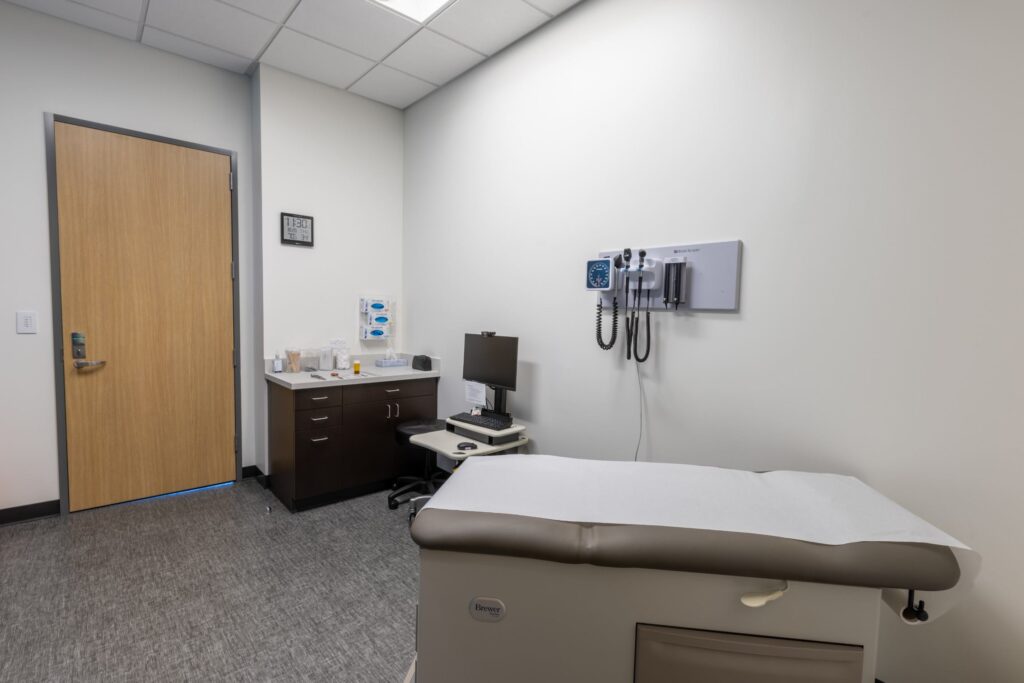
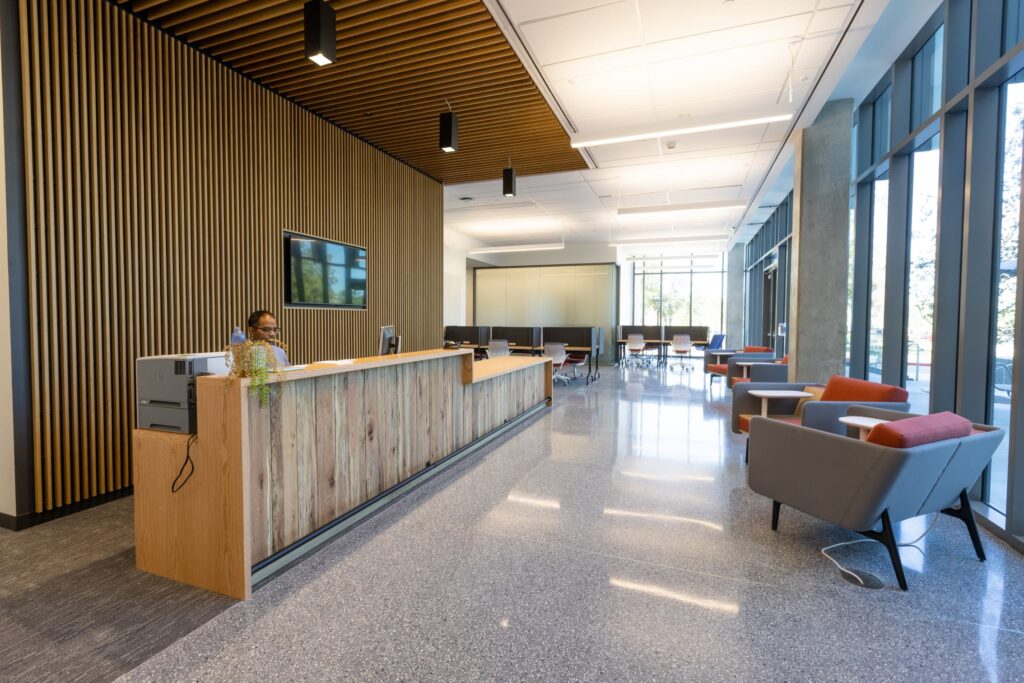
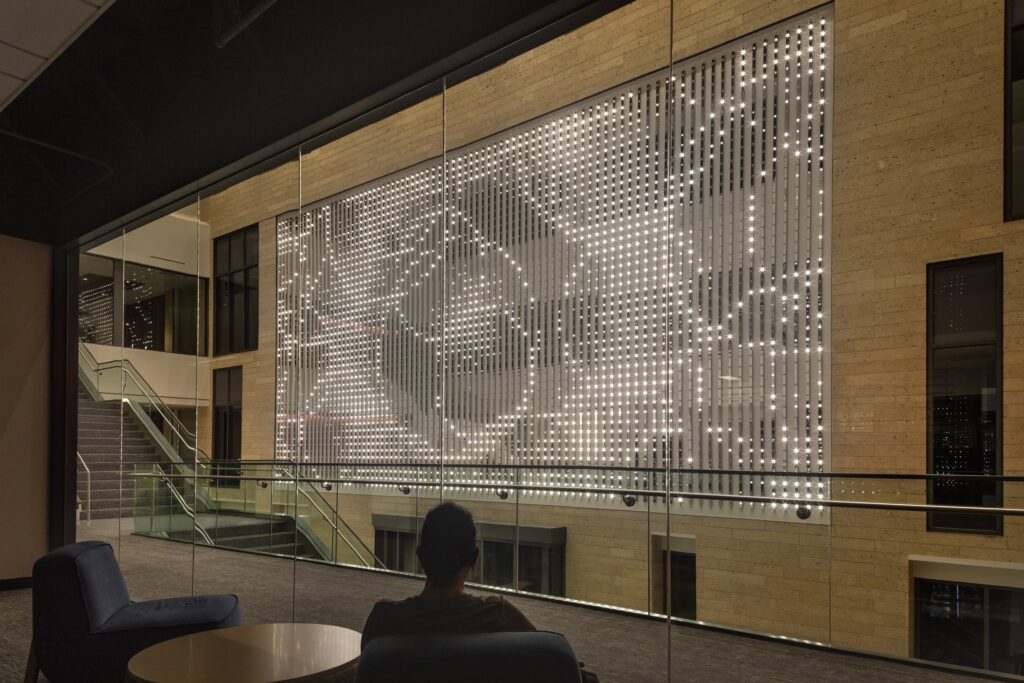
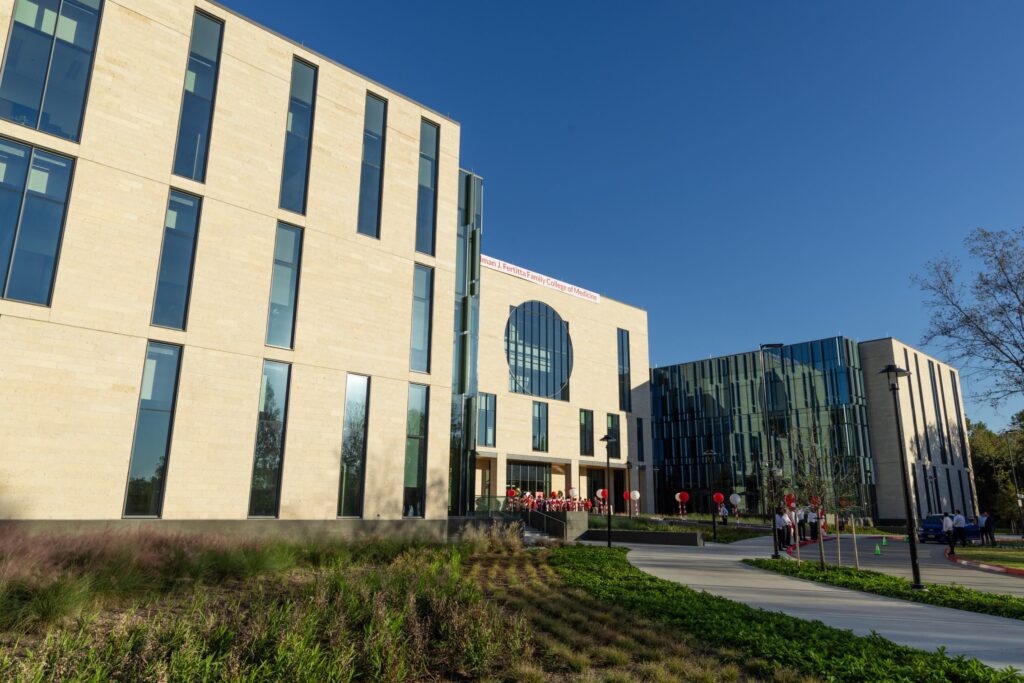
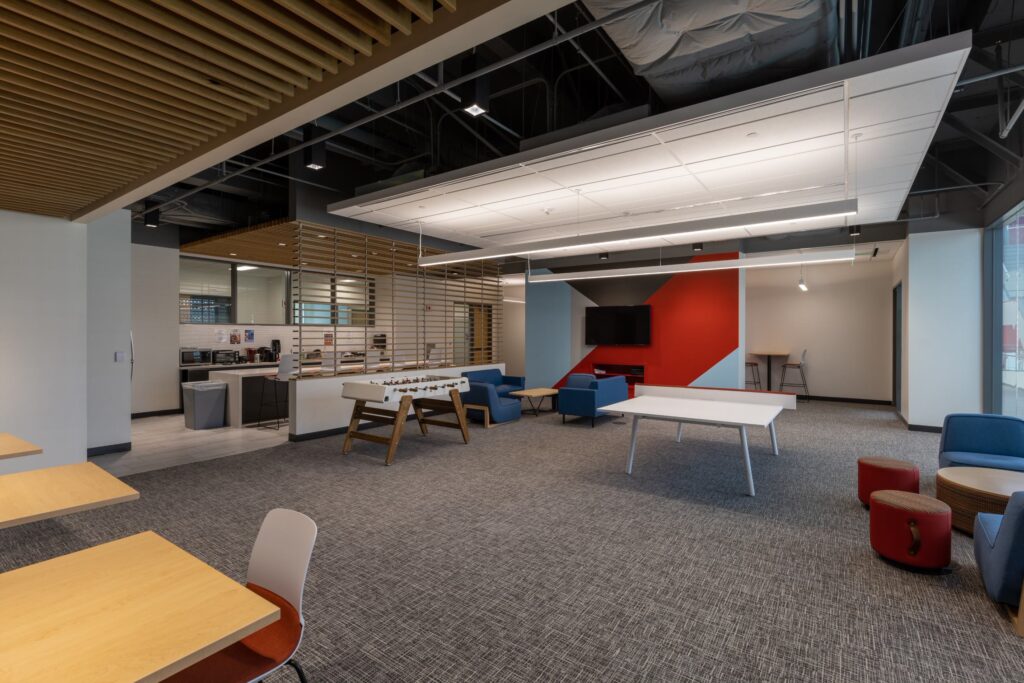
“We are in awe of the beauty of the new building,” said Sage Campbell, a first-year medical student from Houston’s Third Ward neighborhood. “Having better access to our faculty and modern, well-equipped labs is essential to our success and puts us a step ahead of other schools.”
Surrounded by trees, the building’s exterior features a combination of basalt stone and limestone masonry combined with curtainwall, spandrel, and vision glass systems. The focal circular glass window at the entrance, along with a clerestory at the top level, illuminates the interior atrium. It’s spacious and bright and includes two quiet spaces called the Woodland View rooms that look out into the woods.
Architectural design firms Page Southerland Page Inc. and SLAM designed the building while Vaughn Construction was the general contractor.
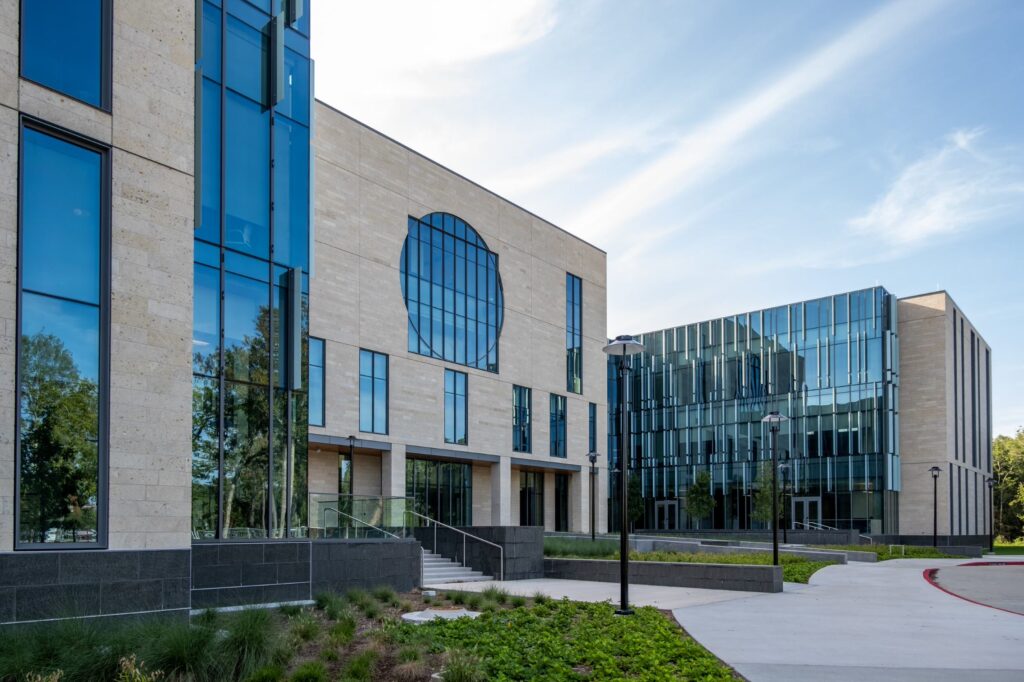

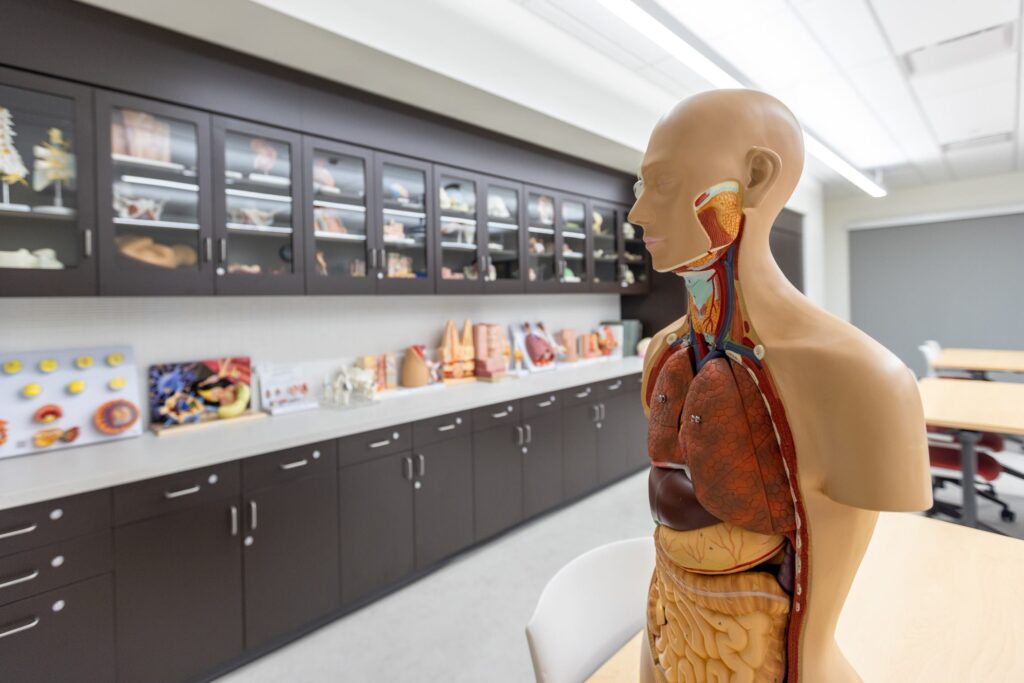

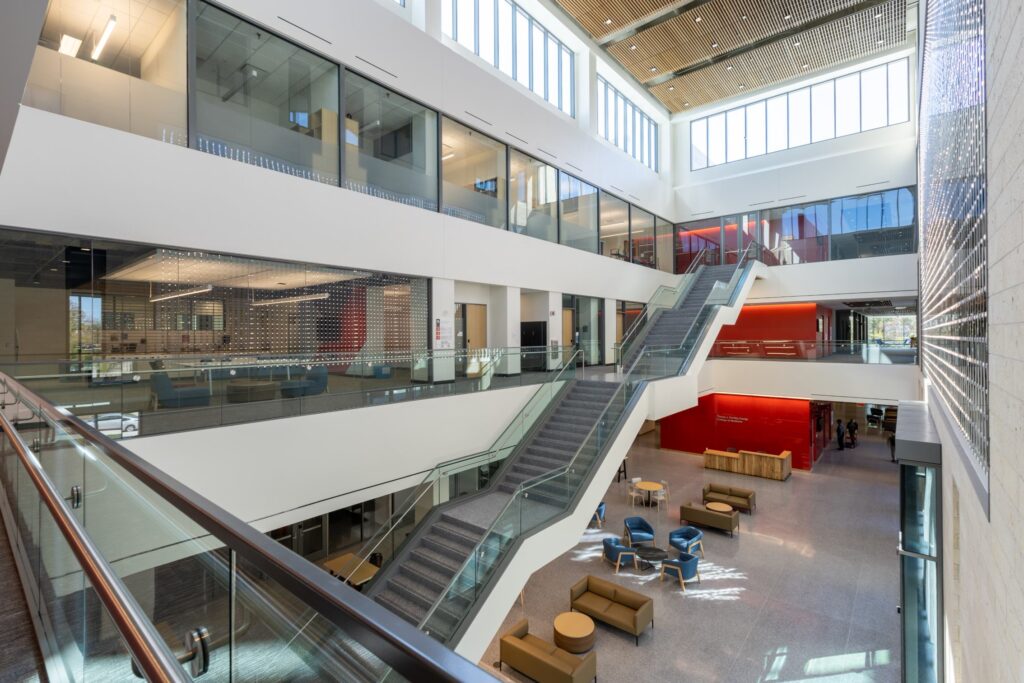
“It is really nice to have a space that we can call our own,” said Rosemary Agwuncha, a third-year medical student from Austin who spent her first two years in the Health 2 building, the medical school’s former temporary home on campus. “My favorite part is the natural light that comes in. It elevates my mood and makes it less daunting to spend long hours inside studying.”
When guests enter the main lobby, they are immediately awestruck by an original light sculpture by world-renowned artist Leo Villareal. The two-dimensional, planar monochromatic piece features 90 mirrored stainless steel LED fixtures and contains nearly 4,000 LED nodes which are bright enough to be visible during periods of full sunlight. The optically potent combination of materials both reflects and emits light, creating a luminous field of floating particles.
Another unique feature is the use of reclaimed wood from 18 willow oak trees that were cut to clear the building site. The trees yielded more than 1,700 feet of boards that were used throughout the building in creating reception desks, the board room table, and the benches in the two Woodland View rooms. In addition, approximately 280 new trees were planted on the site.
More than anything, students see the new building as a major investment in their future and the college’s mission to create a new generation of physicians that will bring much-needed health care to so many who, for years, have been neglected.
“This new facility is the perfect place to learn how to do that,” said Campbell. “I am proud to be a part of this institution and can’t wait to see what the future holds for all of us.”
About the University of Houston
The University of Houston is a Carnegie-designated Tier One public research university recognized with a Phi Beta Kappa chapter for excellence in undergraduate education. UH serves the globally competitive Houston and Gulf Coast Region by providing world-class faculty, experiential learning and strategic industry partnerships. Located in the nation’s fourth-largest city and one of the most ethnically and culturally diverse regions in the country, UH is a federally designated Hispanic- and Asian-American-Serving institution with enrollment of more than 47,000 students.
About the Tilman J. Fertitta Family College of Medicine
The Tilman J. Fertitta Family College of Medicine is the City of Houston’s first new medical school in 50 years. The UH Board of Regents voted to establish it in 2017 and the Texas Legislature authorized the plan in 2019. The inaugural class of 30 students started in 2020.
The Tilman J. Fertitta College of Medicine is built on an important social mission – to improve the overall health and health care of greater Houston, the state of Texas and beyond. It focuses on educating a diverse group of physicians with a deep understanding of the social determinants of health and a commitment to provide high quality, affordable health care to patients to underserved communities.
